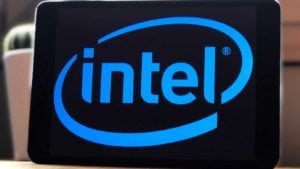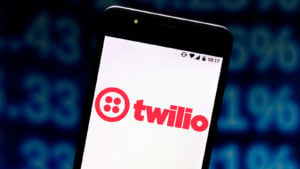The holiday season has arrived. Bullish investors are hoping for a potential Santa Claus rally after what’s been a bumpy start to the last month of the year. As more information on the omicron variant continues to crop up, Wall Street’s worst fears of a large-scale lockdown seem to be fading away. Against this backdrop, I’ll discuss seven stocks to buy now for a potential year-end rally.
“We expect reopening dynamics to continue to drive returns at the start of the year as excess consumer savings are spent,” UBS (NYSE:UBS) remarked in its 2022 outlook report. “As the year progresses, we think business spending will play a larger role in driving returns, as companies expand capacity, restock inventories, and target increased market share.”
However, despite the positive outlook, the end of 2021 could turn out to be a choppy one. We are likely to see more near-term dips before the stock market reverses course and launches a dramatic year-end rally.
With that information, here are seven stocks to buy that should make great additions to a long-term portfolio before a potential year-end rally:
- Bath and Body Works (NYSE:BBWI)
- First Trust NASDAQ Technology Dividend Index Fund (NASDAQ:TDIV)
- Intel (NASDAQ:INTC)
- Shopify (NYSE:SHOP)
- Stitch Fix (NASDAQ:SFIX)
- Teladoc Health (NYSE:TDOC)
- Twilio (NYSE:TWLO)
Stocks to Buy: Bath and Body Works (BBWI)

52-Week Range: $29.18 – $82
Columbus, Ohio-based retailer Bath & Body Works specializes in home fragrance and body care products. It generates most of its revenue in North America through the Bath & Body Works, C.O. Bigelow, and White Barn brands. In August, L Brands spun off Victoria’s Secret (NYSE:VSCO) and renamed the company as Bath & Body Works.
The retailer released third-quarter results on Nov. 17. Net sales came in at $1.68 billion, down from $1.7 billion a year ago. Adjusted net income came in at $245 million, or 92 cents per diluted share, up from $236 million, or 83 cents per diluted share, in the prior-year quarter.
On the results, CEO Andrew Meslow remarked, “In our first quarter as a standalone business, Bath & Body Works continued our positive momentum. We achieved third quarter results that exceeded our expectations, with a net sales increase of 53 percent and an adjusted earnings per share from continuing operations increase of 360 percent compared to the third quarter of 2019.”
Bath & Body Works has delivered solid growth since August. Yet, rather than soaps and candles, the retailer has benefited primarily from hand sanitizers and self-care spending.
Thanks to its primarily domestic supply chain, the company is forecasting a robust fourth quarter this holiday season. BBWI stock is at $76 per share, up about 103% YTD. Shares are trading at 15.9 times forward earnings and 2.1 times trailing sales. The 12-month median price forecast for Bath & Body Works stock is $90.
First Trust NASDAQ Technology Dividend Index Fund (TDIV)

52-Week Range: $48.26 – $62.39
Expense Ratio: 0.5%
Our next discussion centers around an exchange-traded fund (ETF), namely the First Trust NASDAQ Technology Dividend Index Fund. It provides exposure to dividend-paying technology or telecommunications firms listed stateside.
TDIV, which has 93 holdings, tracks the NASDAQ Technology Dividend Index. The fund started trading in August 2012, and assets under management stand at $1.75 billion. Funds are distributed among semiconductors and semiconductor equipment (38.75%), technology hardware, storage and peripherals (14.74%), software (14.57%) and telecommunication services (9.96%), and other segments.
The top 10 stocks in the fund constitute roughly 60% of all holdings. Among the leading names on the roster are Broadcom (NASDAQ:AVGO), Microsoft (NASDAQ:MSFT), Apple (NASDAQ:AAPL), Intel and IBM (NYSE:IBM).
Given the robust run-up in stock prices over the past year and growing uncertainty around the Omicron variant, the Street is becoming more selective about which tech names to include in portfolios right now. Thus, a potential Santa Claus rally will mostly depend on whether leading tech stocks can sustain their positive momentum during the holiday season. Therefore, a fund like TDIV could take the guesswork out of investing for many retail market participants.
TDIV is up 26% since the start of 2021. The ETF is trading at 21.6 times earnings and 4.2 times book value. Interested investors may consider buying the dip in the fund.
Stocks to Buy: Intel (INTC)

52-Week Range: $45.24 – $68.49
Santa Clara, California-based Intel is the world’s largest semiconductor chip manufacturer. It is highly regarded for its microprocessors for global personal computer and data center markets.
Intel released Q3 results in late October. Total revenue increased 5% YOY to $19.2 billion. It delivered “all-time record revenue in Intel’s Internet of Things Group (IOTG) and record third-quarter revenue in the Data Center Group (DCG) and Mobileye businesses.” Non-GAAP net income came in at $7 billion, or $1.71 per diluted share, up 54% YOY from $4.5 billion a year ago. Cash and equivalents ended the period at $7.87 billion.
After the announcement, CEO Pat Gelsinger remarked, “Q3 shone an even greater spotlight on the global demand for semiconductors, where Intel has the unique breadth and scale to lead. Our focus on execution continued as we started delivering on our IDM 2.0 commitments.”
Management aims to set the stage for future growth as it goes through a period of high capital expenditure. It has pledged to invest $20 billion in two cutting-edge semiconductor foundries in Arizona. Meanwhile, analysts forecast the Internet of Things segment will become the key growth driver over the next few years.
Intel recently announced plans to take its Mobileye autonomous vehicle business public. Intel hopes to capture a considerable share of the lucrative self-driving technology market.
INTC stock hovers slightly below $51, up 1% YTD. The current price offers a dividend yield of 2.7%. Shares are trading at 14.3 times forward earnings and 2.7 times trailing sales. And the 12-month median price forecast for Intel stands at $55.
Shopify (SHOP)

52-Week Range: $1,005.14 – $1,762.92
Ottawa, Canada-based Shopify offers an e-commerce platform tailored mainly for small and midsize businesses that want to have an online commerce presence. The company has recently launched Shopify Markets, with the aim of making cross-border commerce easier and safer for entrepreneurs.
Shopify released Q3 results on Oct. 28. Revenue rose 46% YOY to $1.12 billion. Investors were pleased to see that the Gross Merchandise Volume (GMV) reached $41.8 billion.
Adjusted net income declined to $102.8 million, or 81 cents per diluted share, below $140.8 million, or $1.13 per diluted share, in the prior-year period. Cash and marketable securities ended the quarter at $7.52 billion.
On the metrics, company President Harley Finkelstein remarked, “It took 15 years for our merchants to get to $200 billion in cumulative GMV, and just 16 months to double that to $400 billion.”
Shopify is well-positioned to benefit from Omicron variant disruptions could push people to spend more online. Analysts also suggest that a potential dovish vibe from the Federal Reserve could mean further tailwinds for Shopify’s near-term growth.
SHOP stock is at $1,465, up 29% this year. Shares are currently trading at 278 times forward earnings and 43 times trailing sales. In other words, from a valuation standpoint, they are frothy. Nonetheless, the 12-month median price forecast for Shopify stands at $1,700.
Stocks to Buy: Stitch Fix (SFIX)

52-Week Range: $17.92 – $113.76
San Francisco, California-based Stitch Fix provides personal style service for its customers. It relies on artificial intelligence (AI) software to create personalized collection of apparel, accessories, or shoes suited for clients. Management sees further upside potential in its long-term addressable market.
Stitch Fix released Q1 FY22 results on Dec. 7. Net revenue increased 19% YOY to $581 million. Net loss was $1.8 million, or 2 cents loss per diluted share, compared to a net income of $9.5 million, or 9 cents per diluted share, in the prior-year quarter. Cash and equivalents ended the period at $250 million.
CEO Elizabeth Spaulding remarked, “Our revenue per active client topped $500 for the second quarter in a row, reaching a record $524 across our nearly 4.2 million clients. These quarterly results reflect a strong performance in our business from both Fix and Freestyle.”
SFIX stock is around $19 per share, down 67% YTD. Shares are trading at just 1.2 times trailing sales. The depressed valuation limits downside risk and offers an opportunity to buy SFIX shares at a discount. Finally, the 12-month median price forecast for Stitch Fix stands at $23.50.
Teladoc Health (TDOC)

52-Week Range: $88.25 – $308
Virtual health provider Teladoc Health became a household name during the pandemic. Its telehealth platform has enabled millions of Americans to access on-demand healthcare from their homes. Management now aims to take advantage of its first-mover advantage in the telemedicine market.
Teladoc released Q3 results in late October. Revenue soared 81% YOY to $522 million. But net loss widened to $84.3 million, or 53 cents per diluted share, compared to a net loss of $35.9 million, or 43 cents loss per diluted share, in the prior-year quarter. Cash and equivalents ended the period at $823.8 million.
On the results, CEO Jason Gorevic remarked, “Our strong performance in the third quarter reflects our continued success in leading the transformation of healthcare delivery and expanding access for all.”
Wall Street believes Teladoc is well-positioned for long-term growth as it expends the range of services. Management anticipates revenue to surpass $2 billion this year, representing more than 80% YOY growth following sky-high results of 2020.
Appetite for virtual healthcare stocks faded away as social distancing efforts eased in 2021. TDOC stock plunged 32% in November. It currently hovers at $95 territory, down 53% YTD. Investors may consider taking a long position following the recent dip. TDOC is trading at 7.9 times trailing sales. The 12-month median price forecast for Teladoc stands at $161.50.
Stocks to Buy: Twilio (TWLO)

52-Week Range: $235 – $457.30
San Francisco, California-based Twilio is a communications-platform-as-a-service (CPaaS) company. Through its platform, developers can integrate audio, SMS text or email functionality into applications so that companies can better engage with their clients.
Its early-mover advantage has allowed Twilio to reach over a quarter-million developers. Management recently launched the Twilio Engage platform, which offers marketers tools, analytics, data integrations, and messaging to launch analyze marketing campaigns.
Twilio released Q3 results in late October. Revenue increased 65% YOY to $740 million. Non-GAAP income came in at $8.2 million, or 1 cent per share, up from $7.3 million in the prior-year quarter and far better than the 14 cents per share loss management had previously anticipated. Cash and short-term investments ended the quarter at $5.39 billion.
After the announcement, CEO Jeff Lawson remarked, “We are extremely excited about the next generation of our customer engagement platform, and our newest pillar, Twilio Engage, which will allow companies of all sizes and in any industry to build and optimize hyper-personalized marketing campaigns on every channel for customer acquisition, conversion and retention.”
TWLO stock is currently 40% below its all-time high in February. It currently hovers at $270 territory, down 20% YTD. Shares are trading at 16.5 times trailing sales. The 12-month median price forecast for Twilio stands at $410.
On the date of publication, Tezcan Gecgil did not have (either directly or indirectly) any positions in the securities mentioned in this article. The opinions expressed in this article are those of the writer, subject to the InvestorPlace.com Publishing Guidelines.
Tezcan Gecgil, Ph.D., has worked in investment management for over two decades in the U.S. and U.K. In addition to formal higher education in the field, she has also completed all three levels of the Chartered Market Technician (CMT) examination. Her passion is for options trading based on technical analysis of fundamentally strong companies. She especially enjoys setting up weekly covered calls for income generation.
